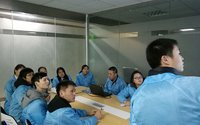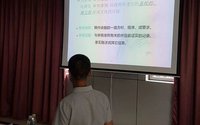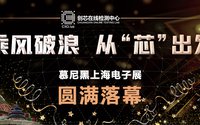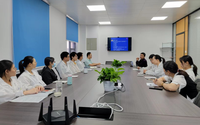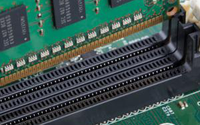Passive component price increases start, MLCC and chips take the lead
日期:2021-03-05 10:52:00 浏览量:3219
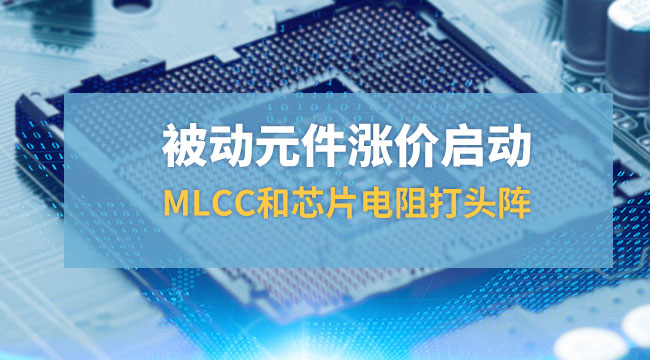
According to recent reports from Taiwan media, Samsung Electro-Mechanics and TDK, the two original MLCC manufacturers, recently issued notices to first-line assembly plant customers, emphasizing that the supply of high-capacity MLCCs is tight and will soon increase their quotations. In the chip resistor market, Taiwanese manufacturer Yageo officially announced a 15-25% price increase from March. Immediately afterwards, Huaxinke also issued a price increase notice to the agents, and new orders will be increased by 10-15%.
In the two passive component markets, chip resistors have already raised their prices before Yageo and Huaxinke. Now that the three major Taiwan factories are rising in unison, the rise of chip resistors in the short term will fully cover all links from the original factory to the distributor, and then to the end customer.
In contrast, MLCC has always been in the state of "air blowing" of the original factory. In the early stage, it was only rumored that the delivery time of Murata and other factories was prolonged, and some agents raised the price of goods. Compared with last year, the demand for 5G mobile phones and automotive electronics will be stronger this year, and there will undoubtedly be more room for price increases of various ICs. Passive components will follow the same rule, and the supply will be more in short supply in the later period.
The upstream price increases, the original factory has to increase the price to respond
When it comes to the driving force for the price increase of passive components, the price increase of upstream materials occupies the first place. Before the Spring Festival, it was reported that the ceramic substrate factory Sanhuan Group negotiated with major chip resistor factories, seeking to increase the price of ceramic substrates by 10-15% in February. After that, Wang Quan, the second largest resistor manufacturer, announced that it will increase the order price of thick film resistors for customers in Greater China by 15% after the Spring Festival.
From this point of view, the result of the negotiation between the resistance factory and the Sanhuan Group should be unsatisfactory. Therefore, Wangquan will increase the price first to ensure the profit level. Now Yageo and Huaxinke have also raised the price of chip resistors, and upstream factors should account for an absolute proportion.
In addition to ceramic capacitors, prices of metals such as copper, aluminum, and packaging materials have been rising recently. Once the pressure from the upstream exceeds the limit, the original factory will inevitably pass on the extra cost to the market, which will lead to the price increase of the entire industry chain. This has been confirmed in the rising chip prices, and the passive component market is no exception.
Frequent changes in the original factory stimulate the willingness of the market to stock up
In addition to upstream factors prompting price increases for passive components, frequent incidents of manufacturers themselves are also constantly affecting market sentiment, and buyers' willingness to stock up is fully mobilized, which will eventually lead to price increases.
Japan is one of the powerhouses for passive component production capacity in the world. At the beginning of the year, due to snow disasters and epidemics, Murata’s many factories in Japan were often shut down, which impacted the passive component market supply. According to Taiwan media reports, Murata's frequent "drops" caused the market to worry about the lengthening of the delivery period. Therefore, some mainland agents began to increase the price of Murata MLCC, and the price increase was beginning to appear.
In February, the earthquake off the coast of Fukushima led to the shutdown of some Murata factories. Outside of Japan, another major MLCC manufacturer, AVX's main factory in Penang, Malaysia, was suspended for 10 days from February 1 due to the impact of the epidemic, mainly affecting the automotive MLCC market.
Although these suspended factories have now resumed work one after another, and the industry has confirmed that it has little impact on the supply of MLCC, frequent changes in the supply chain still arouse buyers' willingness to stock up, and the flames of price increases are ignited.
Recently, Taiwan media reported that a mobile phone assembly factory received news from Samsung Electro-Mechanics and TDK, saying that the supply of Gao Rong MLCC is tight and customers should be prepared for price increases. At present, the price increase of MLCC is indeed on the way. Once the above two factories implement the price increase, other big factories such as Yageo and Murata are also likely to follow up.
To get rid of shortages and price increases, we should rely on mainland manufacturers
Combining the upstream supply and the original factory's own factors, it can be seen that the supply of the passive component market has been eroded, and the gap between supply and demand has been further widened. Under the pattern of the rising IC industry chain, it is difficult for passive components to "stand alone", and people in the IC circle need to be prepared to deal with shortages and price increases.
In the long run, as emerging demands such as 5G and automotive electronics are in an outbreak period, the supply of passive components may continue for several years. With the huge scale of China's electronics manufacturing industry, in order to get rid of the problem of shortages and price increases, it is necessary to achieve localized supply of passive components.
The outbreak of emerging demand provides huge industrial opportunities, not only international manufacturers can make more profits, but also mainland manufacturers can take this opportunity to realize technological innovation and capacity expansion, so as to reduce the degree of external dependence of the local electronics industry.



